Rotifers are some of the most valuable microorganisms in the marine aquarium hobby and commercial aquaculture. These tiny creatures are the perfect first food for many baby fish and provide important nutrition for coral species and filter-feeding invertebrates. Setting up a rotifer culture at home lets you have a constant supply of nutritious live food while creating a more natural ecosystem in your tanks.
A good rotifer culture kit gives you everything needed to start and keep a healthy rotifer population. Unlike old methods that needed lots of equipment and know-how, modern culture kits make the process simple for hobbyists of all experience levels. These kits usually include live rotifer starter cultures, the right phytoplankton food, and basic tools for keeping good conditions.
Rotifers have been used in aquaculture for decades for good reason. They multiply quickly, are the right size for baby fish to eat, and can be nutritionally boosted. By growing your own rotifers, you're giving better nutrition to your aquatic pets and helping the overall balance and health of your aquarium.
Key Takeaways
- Rotifers are essential microorganisms for feeding coral, filter feeders, and larval fish
- Quality rotifer culture kits include both live rotifers and phytoplankton food sources
- Optimal culture conditions include temperatures of 24-25°C and salinity of 19-25 ppt
- Regular maintenance and feeding schedules are crucial for successful rotifer cultivation
- Rotifers help establish natural ecosystem cycles in marine aquariums
- AlgaGen offers specialized rotifer products with live arrival guarantees
Understanding Rotifers: Biology and Nutritional Value
Rotifers (phylum Rotifera) are microscopic aquatic animals typically 100-500 microns in size. Their name comes from the Latin for "wheel-bearer," referring to the wheel-like structure at their front end that spins when they move. This special part creates water currents that pull food particles toward their mouth, making them good filter feeders.
What makes rotifers so useful in aquariums is their great nutritional value. They work as living food packages that can be made even better through "bioencapsulation." By feeding rotifers with high-quality phytoplankton rich in essential fatty acids and vitamins before giving them to your aquatic animals, you create nutritionally-boosted live food custom-made for your animals' needs.
The most commonly grown rotifer species for aquarium use is Brachionus plicatilis, which has several helpful traits:
- Fast reproduction rate (population can double in less than 24 hours under good conditions)
- Right size for feeding baby fish and coral polyps
- Good swimming behavior that makes fish want to eat them
- Ability to be nutritionally boosted through their diet
- Can handle a range of water conditions
These tiny organisms play a key role in the aquarium ecosystem, not just as food but also by helping with nutrient cycling and water quality. Their constant filtering helps remove tiny particles from the water, while their waste can help good bacteria grow that supports the whole system's stability.
Essential Components of a Quality Rotifer Culture Kit
A good rotifer culture kit should have all the necessary parts to set up and maintain a thriving population. When picking or putting together a kit, make sure it includes these important elements for successful rotifer growing.
Live Rotifer Starter Culture
The foundation of any rotifer culture kit is a healthy starter population. Quality rotifer cultures should:
- Contain active, healthy specimens with visible swimming behavior
- Be free of contaminants and predators
- Include sufficient density to establish a new culture (typically 100-200 rotifers per milliliter)
- Come with a guarantee of live arrival, like AlgaGen's products that ensure live delivery with UPS NextDay and 2-Day shipping options
Appropriate Phytoplankton Food Source
Rotifers need high-quality phytoplankton as food. The ideal rotifer culture kit includes:
The PhycoPure Greenwater offered by AlgaGen provides live, pure green phytoplankton that's perfect for feeding rotifers while also buffering water against excess CO2 and heavy metal buildup.
Culture Vessel and Equipment
A proper culture system requires:
- Appropriate container for the culture volume (often 1-5 gallons)
- Gentle aeration system to maintain oxygen levels and keep rotifers in suspension
- Filtration components (typically 50-micron mesh for harvesting)
- Temperature control or placement recommendations
- Simple maintenance tools
Comprehensive Instructions
Clear, detailed instructions are crucial for success, including:
The Rotifer Starter Combo from AlgaGen provides a complete package that includes both live rotifers and the appropriate phytoplankton food source, allowing aquarists to establish a sustainable culture with minimal effort. This combination approach ensures that you have everything needed to begin cultivating these valuable microorganisms immediately.
Setting Up Your Rotifer Culture System
Setting up a successful rotifer culture requires careful setup to create the best environment for these microscopic creatures. Follow these steps to ensure your culture thrives from day one.
Preparing the Culture Container
1. Select an appropriate vessel: A clean 1-2 gallon container works well for most home cultures. Clear containers allow for easy observation.
2. Sterilization: Thoroughly clean the container with a mild bleach solution (1 part bleach to 9 parts water), then rinse repeatedly with fresh water until no chlorine smell remains.
3. Water preparation: Fill the container with clean, chlorine-free saltwater. For most rotifer species, a salinity of 19-25 ppt (parts per thousand) is ideal—slightly lower than typical marine aquarium salinity.
4. Temperature stabilization: Place the container in a location with stable temperature, ideally between 24-25°C (75-77°F). Avoid areas with direct sunlight or significant temperature fluctuations.
Setting Up Aeration
Proper aeration is crucial for rotifer cultures, but too much bubbling can damage these delicate organisms:
1. Install a gentle air supply using an aquarium air pump connected to airline tubing.
2. Use an air stone or rigid airline to create gentle bubbling that keeps rotifers suspended without creating strong currents.
3. Adjust airflow to create visible water movement without violent bubbling or splashing.
Introducing the Starter Culture
When adding your Zoo-Plasm Rotifers or other starter culture:
1. Allow the sealed culture container to acclimate to room temperature if it was shipped.
2. Gently mix the culture container to resuspend any settled rotifers.
3. Slowly pour the entire contents into your prepared culture vessel, avoiding splashing.
4. Allow the culture to stabilize for 1-2 hours before proceeding to the feeding step.
Initial Feeding
Proper initial feeding is essential for culture establishment:
1. Add the recommended amount of PhycoPure Reef Blend or other appropriate phytoplankton to the culture.
2. Start with enough phytoplankton to give the water a slight green tint. For most cultures, this is approximately 5-10ml of concentrated phytoplankton per gallon.
3. Monitor the water color over the next 24 hours—it should gradually clear as rotifers consume the phytoplankton.
By following these setup procedures, you'll create an environment where your rotifers can thrive and quickly establish a productive culture. Remember that consistency is key—maintaining stable conditions will lead to healthier, more productive rotifer populations that can provide ongoing nutrition for your aquarium inhabitants.
Maintaining Optimal Conditions for Rotifer Growth
The success of your rotifer culture depends largely on maintaining favorable environmental conditions. Attention to these key parameters will ensure your culture remains productive and healthy for continuous harvesting.
Temperature Management
Rotifers are temperature-sensitive organisms that perform best within a specific range:
- Optimal temperature: 24-25°C (75-77°F)
- Acceptable range: 20-28°C (68-82°F)
- Avoid rapid temperature fluctuations exceeding 2°C in a 24-hour period
Temperature stability can be achieved by:
- Placing the culture in a temperature-controlled room
- Using a small aquarium heater designed for the volume of your culture
- Keeping the culture away from windows, air vents, or other sources of temperature fluctuation
Water Quality Parameters
Maintaining appropriate water chemistry is essential for rotifer reproduction and survival:
- pH: Maintain between 7.5-8.5, with 8.0 being ideal
- Salinity: 19-25 ppt (lower than standard marine aquarium salinity)
- Dissolved oxygen: Ensure adequate aeration to maintain high oxygen levels
- Ammonia: Keep below 1 ppm through regular water changes or harvesting
Feeding Regimen
A consistent feeding schedule is crucial for maintaining rotifer populations:
1. Visual assessment: Monitor the clarity of the culture water. As rotifers consume phytoplankton, the water will become clearer.
2. Feeding frequency: Add PhycoPure Reef Blend or PhycoPure Greenwater 1-3 times daily, depending on culture density.
3. Feeding amount: Add enough phytoplankton to maintain a slight green tint in the water. Overfeeding can lead to water quality issues, while underfeeding limits population growth.
4. Consistency: Feed at approximately the same times each day to maintain stable conditions.
Pro Tip: Rather than following rigid feeding schedules, learn to "read" your culture. The water should have a very light green tint after feeding, which gradually clears as rotifers consume the phytoplankton. If the water remains green for more than a few hours after feeding, reduce the amount of phytoplankton at the next feeding.
Monitoring Population Density
Tracking rotifer density helps optimize your culture management:
- Visual assessment: A healthy, dense culture appears cloudy with visible swimming rotifers when a sample is held up to light.
- Microscopic examination: For precise management, examine a drop of culture under a microscope and count rotifers in a defined area.
- Target density: Aim for 500-1000 rotifers per milliliter for optimal productivity.
Preventing Contamination
Maintaining a clean culture is essential for long-term success:
- Use dedicated equipment for your rotifer culture to prevent cross-contamination.
- Wash hands thoroughly before handling the culture.
- Keep the culture covered to prevent airborne contaminants.
- Regularly inspect for signs of contamination such as unusual odors, discoloration, or the presence of other organisms.
By maintaining these optimal conditions, your rotifer culture will remain productive and can serve as a continuous source of nutritious live food for your aquarium inhabitants. Consistent care leads to consistent results, ensuring your aquatic pets receive the benefits of these valuable microorganisms.
Harvesting and Using Rotifers in Your Aquarium
Once your rotifer culture is established and thriving, you'll want to implement effective harvesting techniques to utilize these nutritious microorganisms in your aquarium. Proper harvesting maintains culture health while providing optimal nutrition for your aquatic animals.
Effective Harvesting Techniques
Implementing proper harvesting methods ensures you collect healthy rotifers while maintaining culture stability:
1. Siphon method: Gently siphon rotifers from the middle of the culture container, avoiding the bottom where debris accumulates.
2. Mesh filtration: Collect rotifers by pouring culture water through a 50-micron mesh filter, which captures rotifers while allowing water and smaller particles to pass through.
3. Harvest timing: Harvest after the culture has been actively feeding for several hours to ensure rotifers are nutritionally packed.
4. Harvest quantity: Remove no more than 30-50% of the culture volume daily to maintain stable population growth. This also serves as a partial water change, improving water quality.
Preparing Rotifers for Feeding
Before introducing harvested rotifers to your aquarium, consider these preparation steps:
1. Rinse if necessary: If water quality in your culture is suboptimal, gently rinse harvested rotifers with clean saltwater of matching salinity.
2. Concentration: For targeted feeding, concentrate rotifers by allowing them to gather in a small volume of water.
3. Enrichment: For maximum nutritional value, consider a short-term enrichment with high-quality supplements before feeding.
Feeding Strategies for Different Aquarium Inhabitants
Different aquarium inhabitants benefit from rotifers in different ways:
1. Larval fish feeding:
- Feed multiple small portions throughout the day rather than one large feeding
- Maintain appropriate rotifer density in the larval rearing tank (typically 5-10 rotifers per ml)
- Supplement with phytoplankton to keep rotifers nutritionally complete while in the rearing tank
2. Coral feeding:
- Target-feed rotifers directly to coral polyps using a pipette or turkey baster
- Turn off water flow briefly (10-15 minutes) to allow corals to capture rotifers
- Zooxanthellae-enriched rotifers can be particularly beneficial for many coral species
3. Broadcast feeding for filter feeders:
- Add rotifers to the aquarium during low flow periods
- Consider feeding after lights out when many filter feeders are most active
- Regular additions of small amounts are more beneficial than occasional large feedings
Feeding Tip: When using products like Zoo-Plasm Rotifers, you can either add them directly to your aquarium or use them to seed your own culture. For direct feeding, target specific areas of your tank where filter feeders or corals are located.
Establishing a Natural Food Chain
One of the most valuable aspects of adding rotifers to your aquarium is their contribution to the natural food chain:
1. Continuous supply: Regular additions of rotifers provide ongoing nutrition even when you're not actively feeding.
2. Ecosystem development: Rotifers support populations of copepods and other microorganisms, creating a more complete ecosystem.
3. Complementary approach: Combine rotifer additions with copepod introductions to establish multiple trophic levels in your aquarium.
By implementing these harvesting and feeding techniques, you'll maximize the benefits of your rotifer culture. Whether you're breeding fish, maintaining delicate corals, or simply seeking to enhance your aquarium's natural food web, properly harvested and utilized rotifers provide exceptional nutritional value that commercial prepared foods simply cannot match.
Troubleshooting Common Rotifer Culture Issues
Even with careful management, rotifer cultures can encounter challenges. Recognizing and addressing these common issues quickly will help maintain a healthy, productive culture.
Population Crashes
A sudden decline in rotifer numbers is one of the most common issues culturists face:
Symptoms:
- Rapid clearing of the culture water
- Noticeable decrease in culture density
- Few or no swimming rotifers visible
Possible Causes and Solutions:
1. Insufficient food:
- Problem: Rotifers have consumed available phytoplankton faster than anticipated
- Solution: Increase feeding frequency or amount of PhycoPure Reef Blend or other phytoplankton
2. Poor water quality:
- Problem: Accumulation of waste products (ammonia, nitrite) has reached toxic levels
- Solution: Perform a partial water change (30-50%) with properly prepared saltwater
3. Temperature fluctuations:
- Problem: Sudden temperature changes beyond the optimal range
- Solution: Move culture to a more stable location and monitor temperature closely
4. Contamination:
- Problem: Introduction of predators or competing organisms
- Solution: Start a new culture with clean equipment using a portion of the healthiest rotifers from the existing culture
Slow Growth or Reproduction
When your culture fails to increase in density as expected:
Symptoms:
- Culture density remains static or increases very slowly
- Rotifers appear less active than normal
Possible Causes and Solutions:
1. Suboptimal temperature:
- Problem: Temperature outside the ideal range of 24-25°C
- Solution: Adjust culture location or use temperature control methods
2. Incorrect salinity:
- Problem: Salinity too high or low for optimal reproduction
- Solution: Adjust to 19-25 ppt through partial water changes
3. Nutritional deficiencies:
- Problem: Phytoplankton quality or variety is insufficient
- Solution: Switch to a more complete food source like PhycoPure Reef Blend that contains multiple phytoplankton species
4. Aging culture:
- Problem: Long-term cultures can experience genetic bottlenecks
- Solution: Introduce fresh rotifers from a new source like Zoo-Plasm Rotifers
Contamination Issues
Unwanted organisms in your culture can compete with or prey upon rotifers:
Symptoms:
- Unusual organisms visible under microscopic examination
- Unexpected changes in culture appearance or smell
- Declining rotifer numbers despite adequate feeding
Possible Causes and Solutions:
1. Ciliate contamination:
- Problem: Small protozoans competing with rotifers for food
- Solution: Harvest healthy rotifers through a 50-micron mesh (which captures rotifers but allows smaller ciliates to pass through) and use them to start a new culture
2. Copepod invasion:
- Problem: Copepods introduced accidentally that prey on rotifers
- Solution: Complete restart with sterilized equipment and new starter culture
3. Bacterial bloom:
- Problem: Cloudy water with bacterial overgrowth
- Solution: Improve aeration, reduce feeding temporarily, and perform partial water changes
Prevention Tip: Maintain a backup culture in a separate container. If your main culture encounters problems, you'll have a healthy reserve to restart your system without purchasing new rotifers.
Conclusion: The Value of Maintaining Your Own Rotifer Culture
Setting up a successful rotifer culture using a quality kit from AlgaGen provides many benefits for your aquarium ecosystem and the creatures that live in it. These microscopic organisms are nutrition powerhouses that can really improve the health of your aquatic pets.
The initial cost of a proper rotifer culture kit pays off through better breeding success, improved coral growth, and overall ecosystem health. By maintaining your own culture, you control the nutritional quality of live food in your system and don't need to rely on commercial products that might contain preservatives or lack essential nutrients.
Remember that consistency is the key to long-term success with rotifer cultures. Regular maintenance, proper feeding, and attention to water quality will ensure your culture stays productive. Even if you face challenges, the troubleshooting tips in this guide will help you quickly fix issues and get your culture back on track.
Whether you're an experienced aquarist looking to breed marine fish or a beginner wanting to provide the best nutrition for your corals, a rotifer culture kit offers an accessible way to use these remarkable microorganisms. Start your culture today with products like the Rotifer Starter Combo or Zoo-Plasm Rotifers, and see the difference that live, nutritious food can make in your aquarium.
- Live Rotifer Starter Culture
- Phytoplankton Food Source
- Culture Container (1-5 gallons)
- Gentle Aeration System
- 50-micron Mesh Filter
- Detailed Instructions
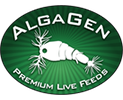
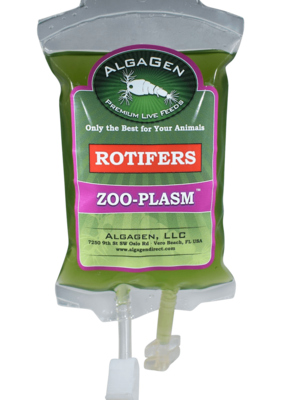


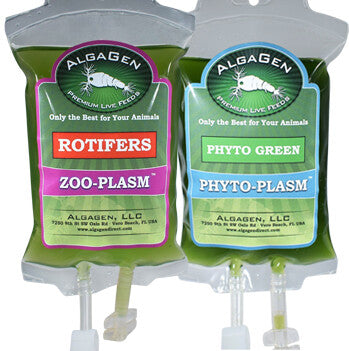
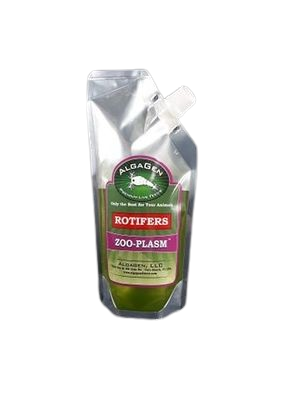
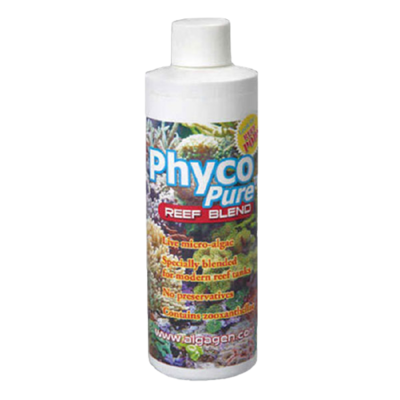
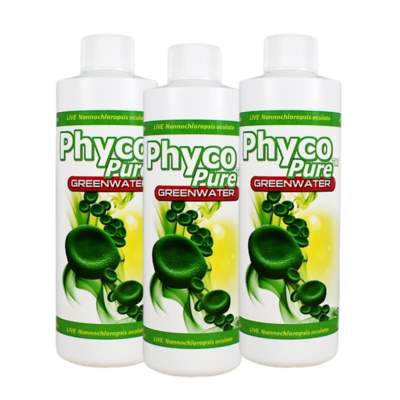
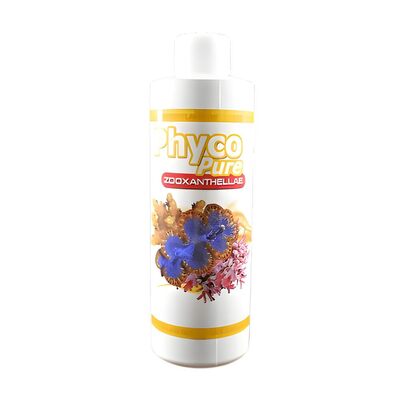
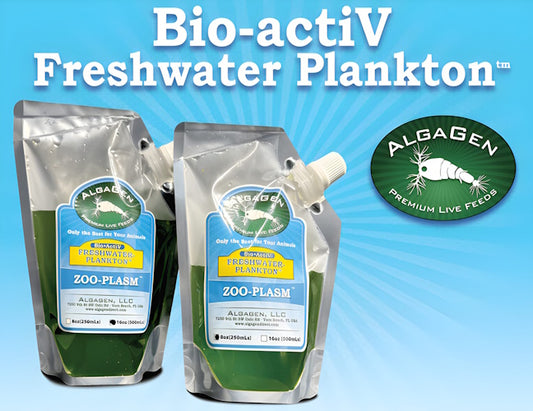
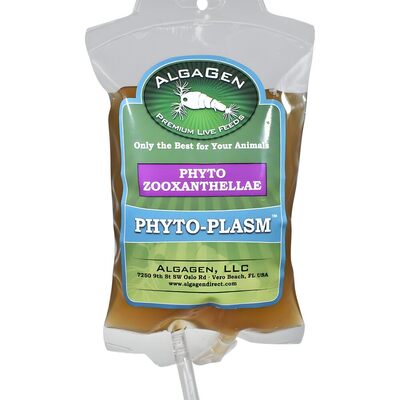
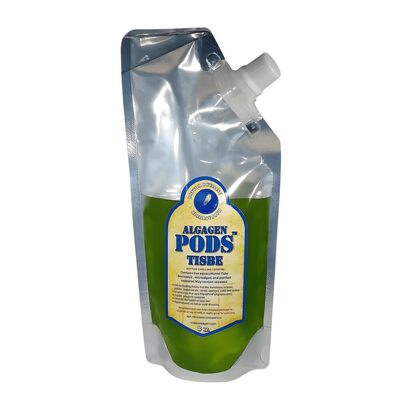
Recent post